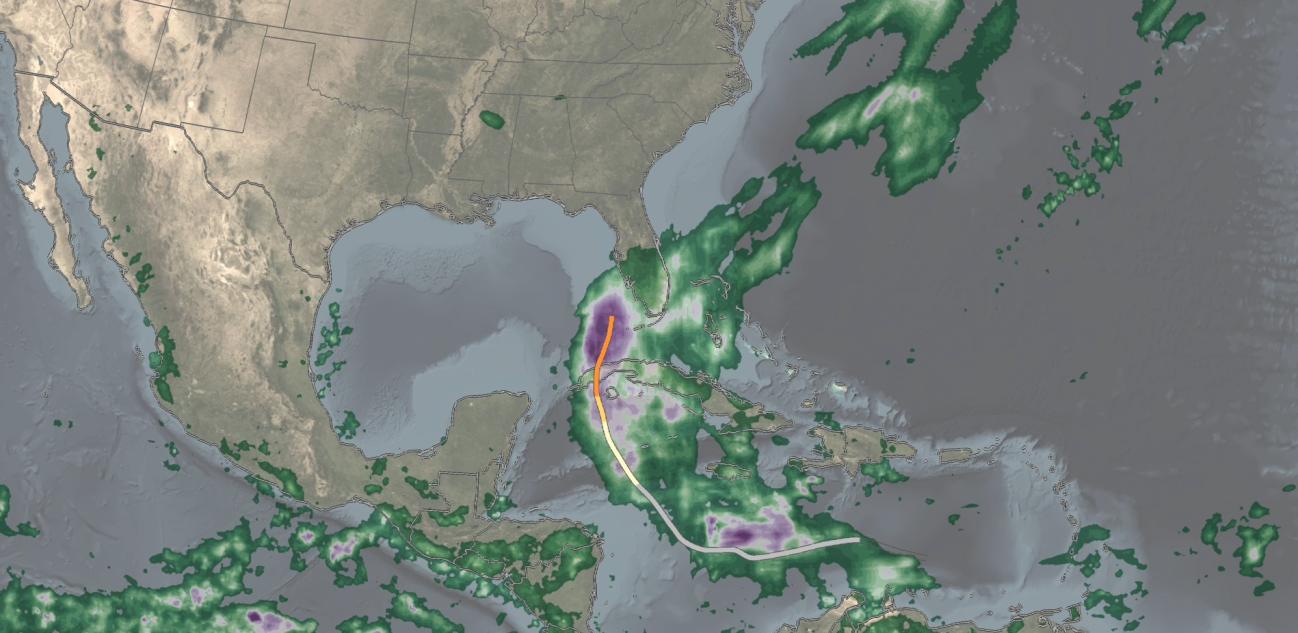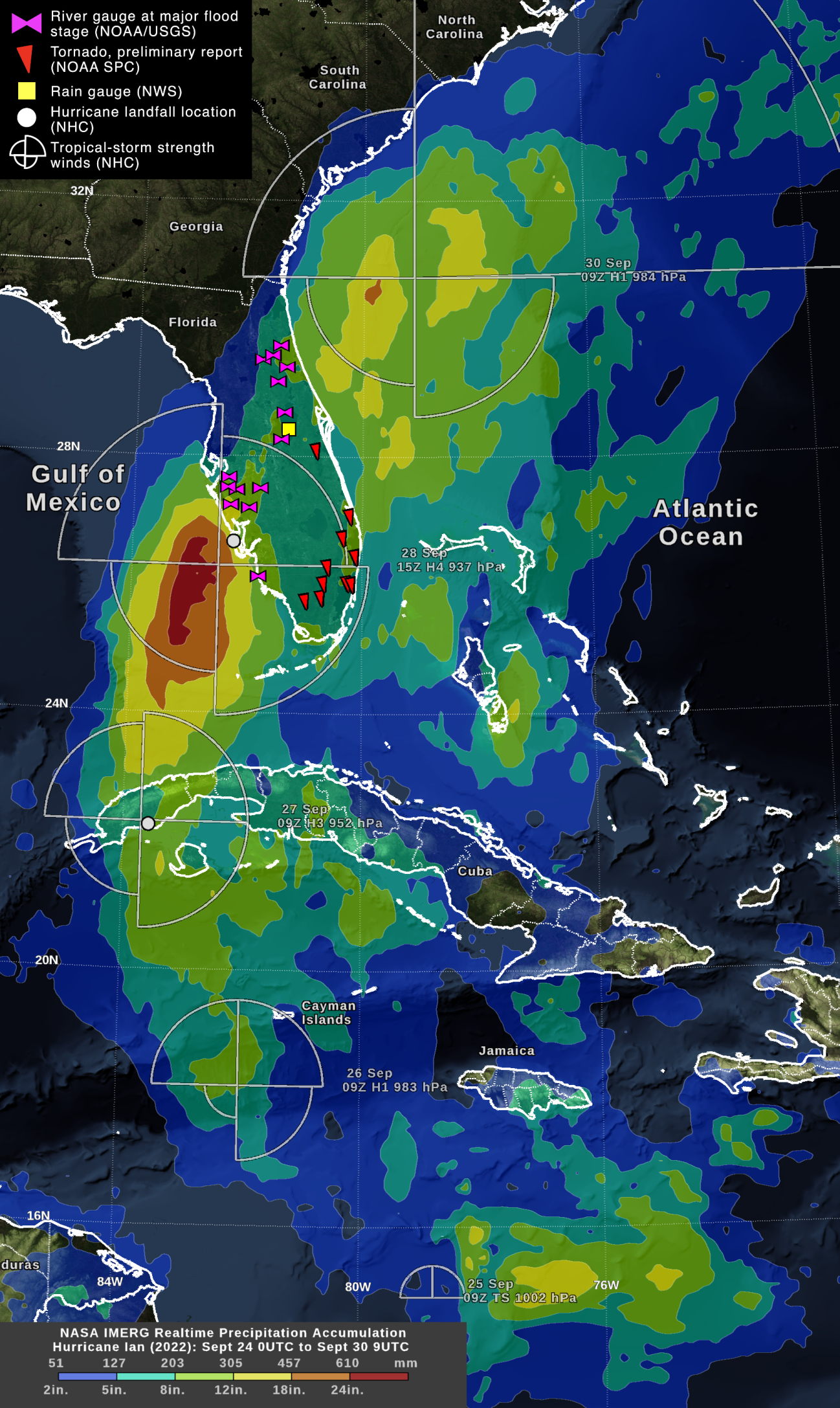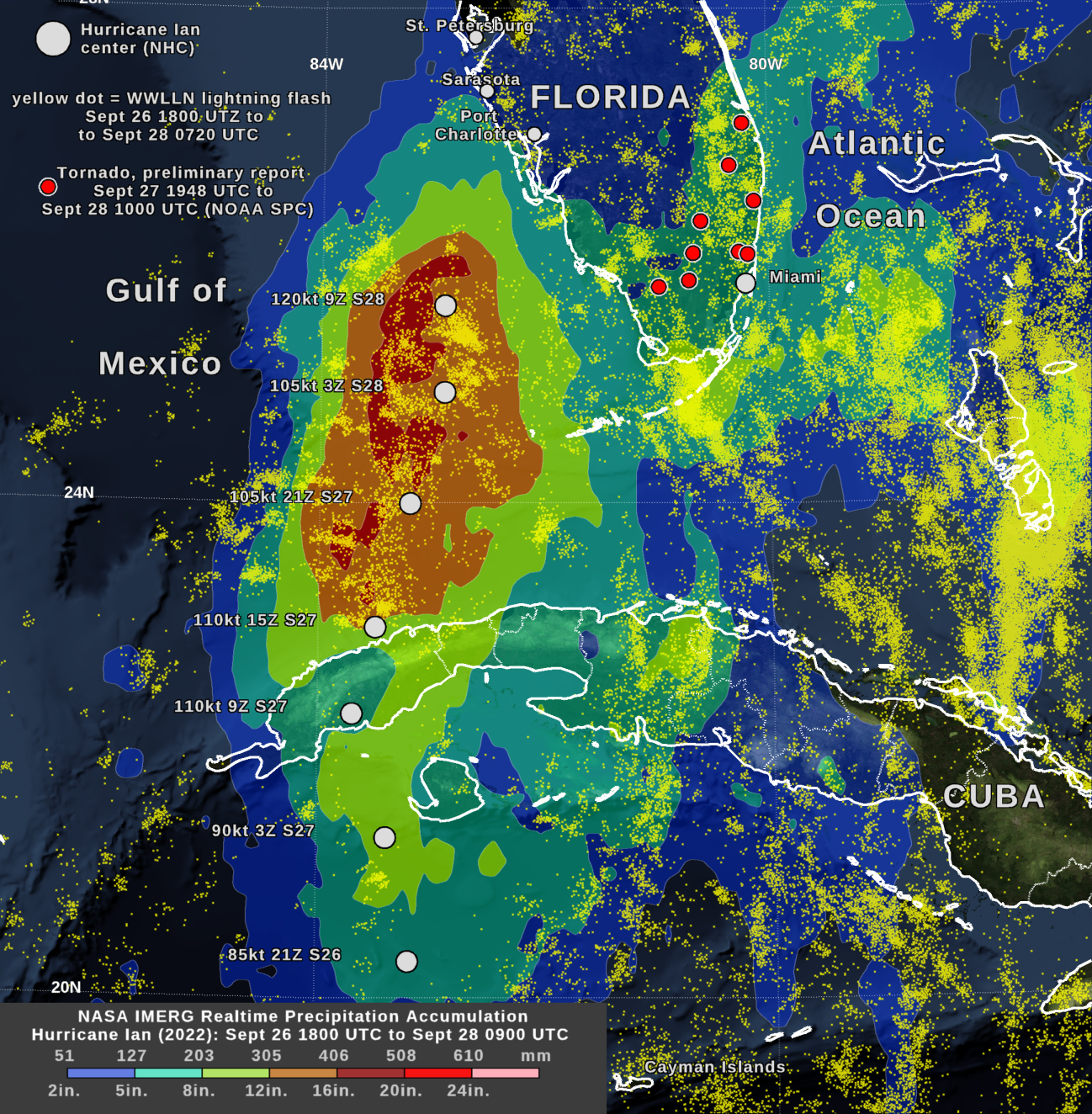
Hurricane Ian Crosses Florida and Heads Towards South Carolina
Ian approaches South Carolina
On Sept. 30, 2022, Hurricane Ian was approaching South Carolina, which was one day after Ian finished its west-to-east crossing of Florida. NASA has been estimating Hurricane Ian's precipitation over land and ocean, which complements the array of detailed observations collected by NOAA and other agencies of Ian's impact over land.
NASA's IMERG algorithm estimated more than 12 inches of precipitation over a broad area of ocean on either side of Florida, but generally under 12 inches over Florida itself. NOAA rain gauges and weather radar identified a few locations over Florida with over 12 inches of precipitation from Hurricane Ian. One such location was in Orlando, marked with a yellow square in the image.
There were preliminary reports of tornadoes over southern Florida the night before Ian's landfall, which are marked by red triangles in the image. The tornadoes were associated with a large, persistent band of heavy rain that maintained a position to the east of Hurricane Ian's inner core during the days prior to the Florida landfall.
On Sept. 29, the day Ian left Florida, numerous USGS stream gauges reached major-flood stage, meaning significant economic damage was expected. These stream gauges are marked with purple bows in the image. Florida's inland flooding was caused by Ian's heavy rainfall. Along the coast, storm surge contributed to the height of the flood water.
The below animation shows the rainfall rate associated with Hurricane Ian through 0730 UTC on Sept.30 along with the storm-total accumulation and the track of Hurricane Ian's eye.
Download Video (right-click -> "Save As")
Ian approaches Florida
Passing over western Cuba on Sept. 27, 2022, Hurricane Ian weakened somewhat. Subsequently, Ian re-intensified on its way to an expected landfall on Florida's west coast on Sept. 28. NASA and other organizations collected observations of Hurricane Ian while it was in the Gulf of Mexico on Sept. 27 and 28.
In the Gulf of Mexico, Ian's eyewall was seen to contain particularly vigorous storm cells. Lightning was observed in Ian's eyewall, whereas lightning had been near absent from Ian's eyewall prior Ian passing over Cuba. Lightning flashes from the World Wide Lightning Location Network (WWLLN) are show in this image as small yellow dots. Over the Gulf of Mexico, the period of active eyewall lightning can be identified using, as reference points, the white dots in the image. These dots mark the location of Hurricane Ian's low-pressure center every six hours, as tracked by the National Hurricane Center.
Download video (right-click -> "Save As")
Once in the Gulf of Mexico, Hurricane Ian intensified and underwent an eyewall replacement cycle early on Sept. 29, according to the National Hurricane Center. During this period, NASA's IMERG algorithm estimates that the rainfall accumulation under Ian's inner core reached 12 to 20 inches. This accumulation is much higher than the 5 to 2 inch accumulation that Ian's inner core had produced the day before, when the storm was located south of Cuba.
On Sept. 27, stretching for several hundred miles to the east of Hurricane Ian's inner core was a band of heavy rain storms and thunderstorms. These storms are seen in the IMERG rainfall accumulation, covering the southern tip of Florida during this period. During the night of Sept. 27 and morning of September 28, these storms spawned a number of tornadoes according to preliminary reports from NOAA.
Credits:
Top image and text by Owen Kelley (NASA GSFC / PPS)
Animation by Jason West (NASA GSFC / PPS)
WWLLN data from the University of Washington with support from Jeremy Thomas and Natalia Solorzano at DigiPen Insitute of Technology and NorthWest Research Associates.



